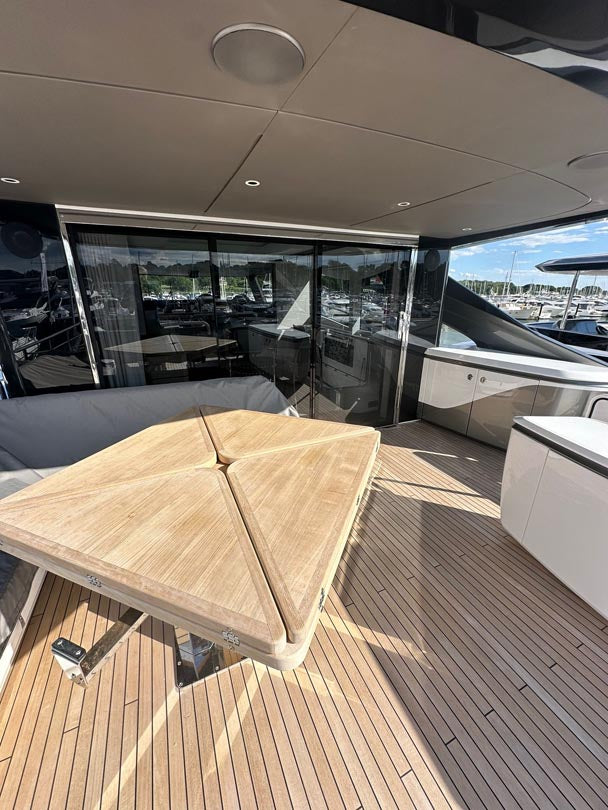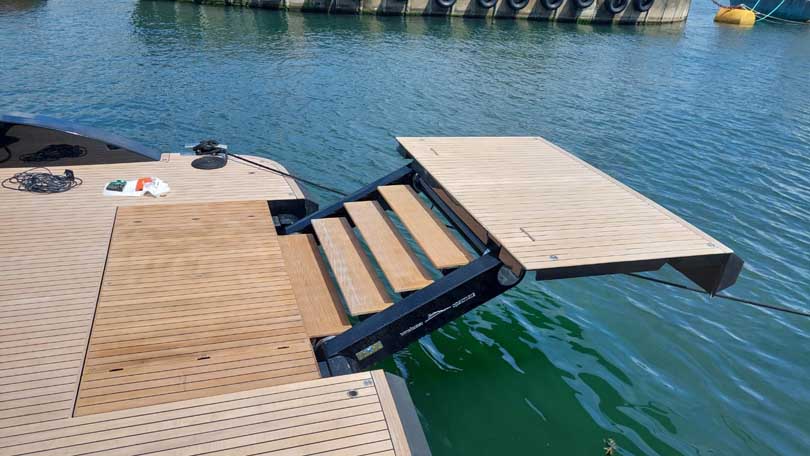Essential maintenance tips for keeping your Seakeeper in top condition
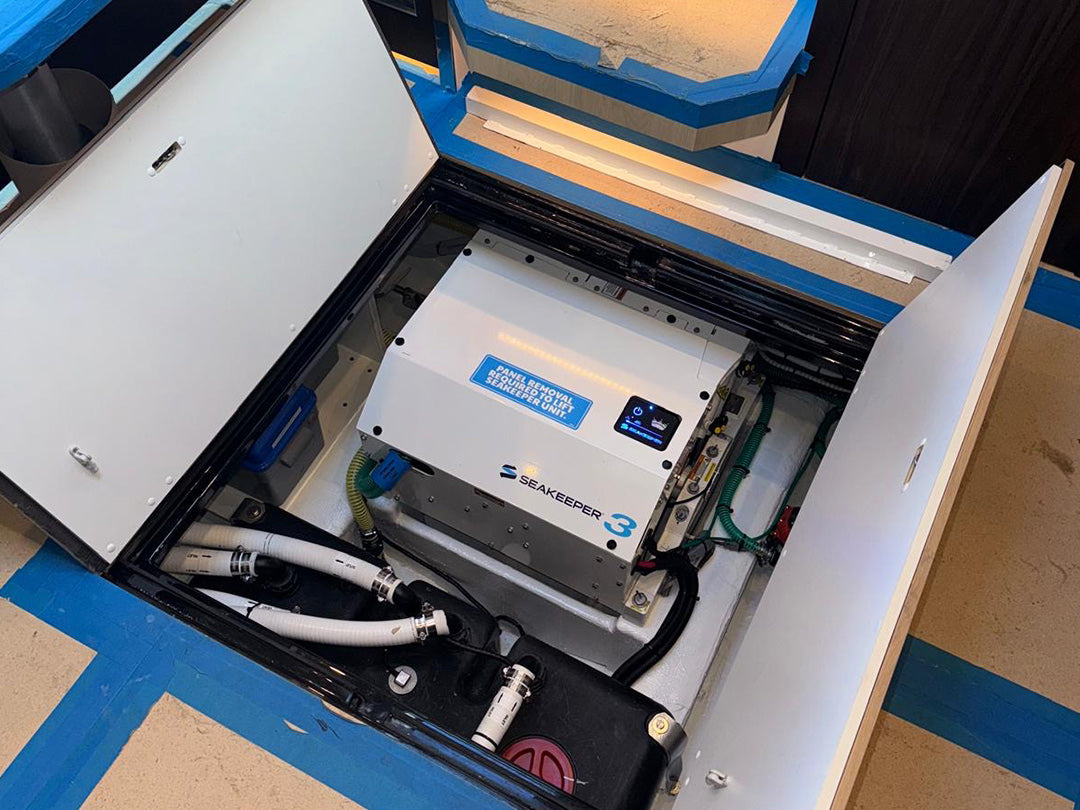
How do you keep your Seakeeper running smoothly? It’s all about smart, regular maintenance. This no-nonsense guide looks at the essential maintenance tips for keeping your Seakeeper in top condition. Dive into these actionable steps, including rinsing procedures, inspection must-dos, and service intervals, tailored to uphold your stabiliser’s performance amidst the harsh marine environment.
Key takeaways
- Regular freshwater rinses - essential for preventing corrosion and prolonging the lifespan of a Seakeeper stabiliser, these should be performed gently and followed by thorough drying to avoid damage and corrosion.
- Annual Seakeeper services - necessary to maintaining peak performance, this involves comprehensive checks and maintenance of electrical, hydraulic, and cooling systems, as well as specific tasks like zinc anode replacement for certain models.
- Routine visual inspections and functional tests - undertake these between professional services. Coupled with an understanding of model-specific maintenance requirements and the use of Seakeeper’s technical resources, are crucial for the stabiliser’s longevity and functionality.
Understanding your Seakeeper's operating environment
The marine environment can be a challenging landscape for any vessel, and your Seakeeper is no exception. Dynamic sea conditions continually test the active control system of your Seakeeper stabiliser, demanding constant adjustments for effective stabilisation. Not to worry; these devices are engineered to withstand these harsh conditions. Their eco-friendly design, devoid of external appendages, reduces the risk of damage.
Moreover, the Seakeeper gyro stabiliser undergoes strenuous environmental testing to confirm its resistance against dust ingress and temporary submersion, giving you peace of mind. This ensures that it’s not affected by water or dust intrusion, ensuring optimal performance in the marine setting. Understanding these operating conditions can help you better manage your Seakeeper’s maintenance.
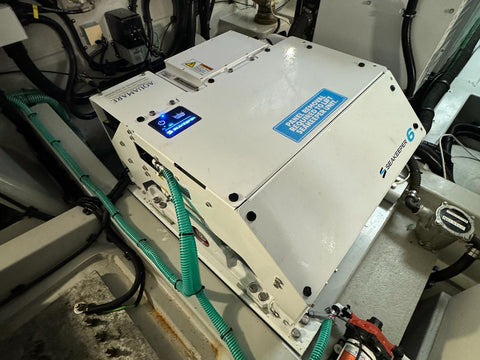
Regular freshwater rinses: The key to longevity
Have you ever noticed the impact of prolonged exposure to salt on metal surfaces? Of course, it leads to corrosion. The same principle applies to your Seakeeper. Regular freshwater rinses are crucial to remove salt deposits and prevent surface corrosion, thereby prolonging the life of your Seakeeper stabiliser.
Prolonged exposure to seawater can cause premature wear of your Seakeeper. Therefore, it is highly recommended to rinse it with fresh water following exposure. This simple procedure can counteract the corrosive effects of salt and contribute significantly to your Seakeeper’s longevity.
When to rinse
As a rule of thumb, rinse your Seakeeper with fresh water as soon as possible after exposure to saltwater. This immediate action helps prevent the onset of corrosion and damage, ensuring that your Seakeeper can withstand the occasional spray of saltwater.
Consider implementing freshwater rinses into your routine - do it intermittently, or even better, at the end of a day spent at sea. This timely action can prevent corrosion buildup and keep your Seakeeper in optimal condition.
Rinsing technique
Now that we understand the importance of rinsing, let’s discuss the appropriate way to do it. Directing a forceful stream of water at your Seakeeper is not advisable. Instead, use a gentle spray to avoid any potential damage, as it is designed to withstand occasional spray.
A wide-spread water pattern is recommended when rinsing, to prevent direct hits on sensitive electrical components. For an effective rinse, use a balanced solution of water and a salt-away product in a pump sprayer. Think of it as giving your Seakeeper a gentle shower, similar to an outboard motor’s rinse after saltwater use. Be sure to cover all surfaces like brake calipers, pads, and rotors to remove salt deposits.
Drying process
After the rinse, it’s time to dry your Seakeeper - and no, leaving it to dry on its own isn’t enough - you need to thoroughly dry the gyro stabiliser components to remove all moisture.
Pay attention to the following steps to effectively dry your Seakeeper stabiliser and prevent premature wear:
- Rinse all metal surfaces and cables thoroughly.
- Dry the stabiliser completely to prevent corrosion and other damage.
- Ensure that your Seakeeper is well-ventilated to aid in the drying process.
Following these steps will help maintain the longevity and performance of your Seakeeper stabiliser.
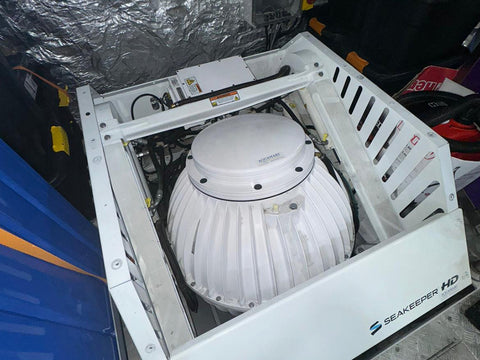
Annual maintenance schedule: Protecting your investment
Your Seakeeper is a significant investment, and it deserves to be treated as such. An annual Seakeeper service is crucial to maintain its peak performance and includes a comprehensive review and maintenance of the unit’s components. These maintenance tasks include checking and servicing the electrical, hydraulic, and cooling systems, inspecting the foundation, and ensuring proper torque on all mounting bolts, among other essential checks.
In places like Fort Lauderdale, known for its maritime services, recreational boat owners can access comprehensive annual services for their Seakeeper, which includes a thorough inspection of the brake, cooling, electronic, and mechanical foundational systems. However, depending on the use intensity and sea conditions, some Seakeeper units might require more frequent services. At Aquamare we are proud specialists of Seakeeper products, vastly experienced with all types of units and maintenance tasks we will keep you running smoothly and safely on the water.
Hydraulic and cooling system care
The hydraulic and cooling systems are crucial parts of your Seakeeper, and they need your attention during the annual maintenance. Inspecting the hydraulic cylinders, hoses, and heat exchanger, as well as checking subsystems for issues, are essential tasks for maintaining these systems.
The cooling system’s care requires a closed-loop maintenance approach, which includes cleaning, descaling the heat exchanger, and ensuring there is proper seawater flow throughout the cooling system. Also, the zinc anode in specific Seakeeper models should be replaced every 150 hours or every 3 months, as part of the maintenance schedule, something we at Aquamare have vast knowledge and experience undertaking.
Brake service and inspection
The brake system is a vital part of your Seakeeper, and it needs careful inspection and service. During the annual service, brake service is performed by removing and replacing accumulators as part of the maintenance routine.
The inspection of the Seakeeper’s brake system should include the following:
- checks for abnormal noises
- commutator condition
- tightness of electrical connections
- regular grease replacements
These steps ensure that your Seakeeper’s brake system is always in top condition.
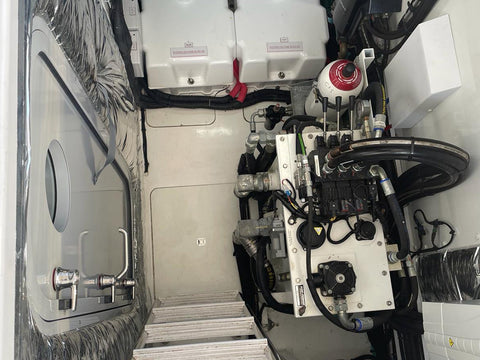
Periodic inspections between services
While professional services are crucial, you also need to conduct regular checks of your Seakeeper’s external systems in between these services. Since most critical components are housed within a sealed enclosure, these checks are necessary.
Perform systematic inspections of the accessible external parts of the Seakeeper to detect any anomalies. Incorporating these checks into your boat’s maintenance routine ensures your Seakeeper’s longevity and functionality. Plus, these routine checks can help reduce your overall maintenance needs.
Visual inspections
Visual inspections are an integral part of your Seakeeper’s maintenance. You should include checking for:
- damage or looseness in microswitches
- damage or looseness in brake switches
- damage or looseness in controller switches
- the condition of fuses
- the condition of wiring harnesses.
Also, don’t forget to:
- assess the level and condition of your Seakeeper’s transfer oil
- look for potential oil leaks and ensure all bolts are tight
- every three months, check the Seakeeper’s actuators for anode wear
- ensure the integrity of the unit’s seal against environmental elements such as dust and water during these visual inspections.
Functional tests
Functional tests are as crucial as visual checks. They help verify the operating condition of control valve microswitches, foot and hand brake switches, and main controller settings. These tests help you ensure that all the switches and settings are working as intended and that your Seakeeper is ready for its next adventure.
Seakeeper-specific considerations
Every Seakeeper model is unique, designed with advanced technology such as vacuum encapsulation and water cooling systems to cope with the harsh marine environment. Therefore, it’s essential to understand the specific maintenance requirements for your Seakeeper model.
For instance, Seakeeper models 1, 4, 4.5, 10.5, and 14 with a single cylinder hydraulic brake system need a bushing replacement every 2000 hours of operation. And larger models like the Seakeeper 26, 35, and 40 involve additional checks on:
- isolators
- clevis assemblies
- bushings
- pins
- clips.
Remember, understanding your Seakeeper model’s specific requirements can ensure better maintenance and longer service life.
Utilising the Seakeeper brochure and technical library
Did you know your Seakeeper comes with a treasure of information? It does, the Seakeeper technical library and brochure are comprehensive resources that provide detailed maintenance and installation documents, all accessible through your browser.
Accessing the Seakeeper’s technical library is easy; it’s available online and offers detailed information about Seakeeper models and specifications to users worldwide. From installation manuals and adapter kits to unpacking instructions, the technical library is your go-to guide for all things Seakeeper.
So, make it a routine to utilise the Seakeeper brochure and technical library for accurate and up-to-date guidance on maintaining your Seakeeper product.
Upgrading your Seakeeper: When to consider a new build or replacement
Just like any other equipment, your Seakeeper might need an upgrade or a complete replacement over time, especially if you have a new boat. This decision is crucial to ensure optimal stabilisation and should be based on your boating activities.
Are you planning to undertake extensive cruising, such as traveling the Great Loop? In that case, it’s vital to evaluate your Seakeeper’s ability to provide consistent performance. Consistent stabilisation, both at rest and at low speeds, is particularly important in extensive cruising and may warrant an upgrade or replacement of the Seakeeper unit to achieve this level of performance.
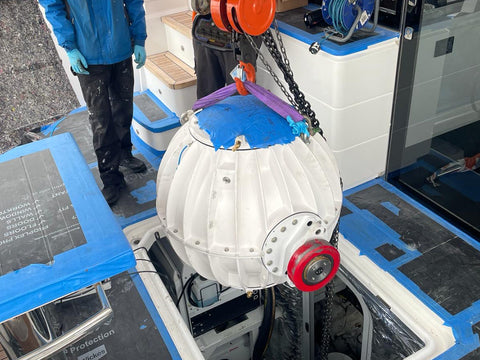
Keeping records: Documenting your maintenance journey
Maintenance records aren’t just paperwork; they’re proof of diligent upkeep and responsible ownership. Well-kept maintenance records with detailed description, can increase your yacht’s market value and impress potential buyers.
Documenting information such as:
- dates
- services performed
- parts utilised
- details of the service provider
A structured log system ensures thorough record-keeping. Regularly reviewing and updating these records requires accurate tracking of your yacht’s maintenance history, including all tasks, observations, and issues noted. These comprehensive tables and logs also provide crucial documentation for insurance claims or resale.
Summary
In summary, maintaining your Seakeeper in top condition is a combination of understanding operating environment, regular rinses, annual maintenance, periodic inspections, and specific model considerations. Using the technical library and keeping detailed maintenance records can significantly aid this process. And remember, when necessary, don’t hesitate to consider an upgrade or replacement. After all, your Seakeeper is a significant and crucial part of your boating experience, it deserves the best care, something we offer through Aquamare servicing.
Frequently asked questions
Why is it important to rinse my Seakeeper with fresh water?
Rinsing your Seakeeper with fresh water is important to remove salt deposits and prevent surface corrosion, ultimately prolonging its lifespan.
What does the Seakeeper's annual maintenance involve?
The Seakeeper's annual maintenance involves a comprehensive review and maintenance of the unit's components, including electrical, hydraulic, and cooling systems.
What should I check during visual inspections of my Seakeeper?
During visual inspections of your Seakeeper, make sure to check for damage or looseness in microswitches, brake switches, controller switches, the condition of fuses and wiring harnesses, and the level and condition of the Seakeeper's transfer oil. Regular visual inspections can help ensure proper functioning of your Seakeeper.
When should I consider upgrading or replacing my Seakeeper?
Consider upgrading or replacing your Seakeeper if you plan to undertake extensive cruising and need consistent stabilisation at rest and low speeds to ensure peak performance.
How can the Seakeeper technical library help me?
The Seakeeper technical library offers comprehensive resources including maintenance and installation documents, making it your go-to guide for all things Seakeeper.

